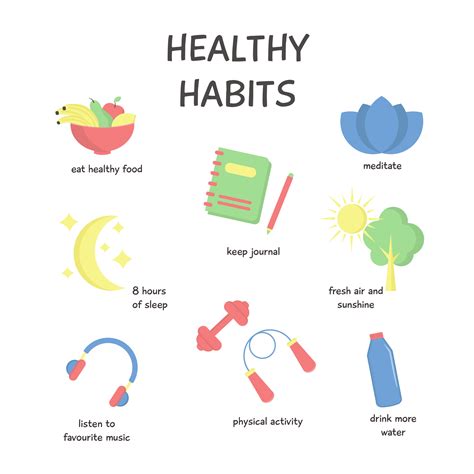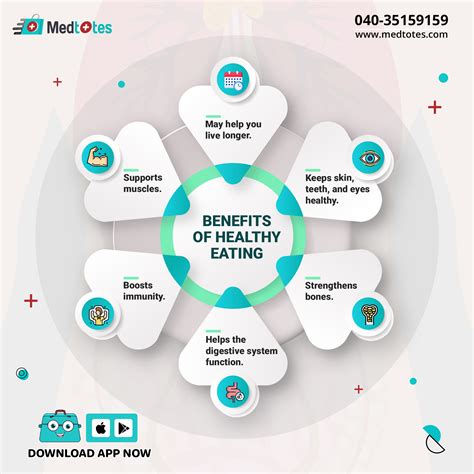Intro
Maintaining a healthy diet is crucial for overall well-being, as it provides the body with the necessary nutrients, vitamins, and minerals to function properly. A well-planned diet can help prevent chronic diseases, such as heart disease, diabetes, and certain types of cancer, while also supporting mental health and energy levels. With the vast amount of information available on healthy eating, it can be overwhelming to know where to start. However, by understanding the importance of a balanced diet and learning how to plan healthy meals, individuals can take control of their health and make informed decisions about their nutrition.
Eating a healthy diet is not just about cutting out unhealthy foods, but also about incorporating a variety of nutrient-dense foods into your meals. A balanced diet should include a mix of fruits, vegetables, whole grains, lean proteins, and healthy fats. These foods provide essential vitamins, minerals, and antioxidants that help protect against cell damage and support overall health. Additionally, a healthy diet can help support weight management, improve sleep quality, and boost energy levels. By making healthy food choices, individuals can reduce their risk of chronic diseases and maintain optimal health.
In today's fast-paced world, it can be challenging to prioritize healthy eating, especially with the convenience of processed and fast foods. However, with a little planning and creativity, individuals can make healthy eating a sustainable part of their lifestyle. By setting realistic goals, seeking support from friends and family, and finding healthy recipes and meal ideas, individuals can overcome common barriers to healthy eating and develop a positive relationship with food. Whether you're looking to improve your overall health, manage a chronic condition, or simply feel more energized and focused, planning healthy eating habits is an essential step towards achieving your goals.
Understanding the Basics of Healthy Eating

To plan healthy eating habits, it's essential to understand the basics of nutrition and how different foods affect the body. A healthy diet should include a variety of foods from all food groups, including fruits, vegetables, whole grains, lean proteins, and healthy fats. The United States Department of Agriculture (USDA) recommends filling half your plate with fruits and vegetables, one-quarter with lean protein, and one-quarter with whole grains. Additionally, healthy fats, such as those found in nuts, seeds, and avocados, should be included in moderation. By understanding the different food groups and their nutritional benefits, individuals can make informed decisions about their diet and develop healthy eating habits.
Nutrient-Dense Foods
Nutrient-dense foods are those that provide a high amount of essential vitamins, minerals, and antioxidants while being low in calories. Examples of nutrient-dense foods include leafy greens, such as spinach and kale, berries, such as blueberries and strawberries, and fatty fish, such as salmon and sardines. These foods should be prioritized in a healthy diet, as they provide a range of health benefits, including reducing inflammation, supporting heart health, and protecting against cell damage. By incorporating a variety of nutrient-dense foods into your meals, you can ensure you're getting the necessary nutrients to support overall health.Planning Healthy Meals

Planning healthy meals is an essential step in developing healthy eating habits. By taking the time to plan and prepare meals, individuals can ensure they're getting the necessary nutrients while avoiding unhealthy foods. Here are some tips for planning healthy meals:
- Start by making a list of healthy foods you enjoy and want to include in your meals
- Plan your meals around a variety of protein sources, including lean meats, fish, eggs, and legumes
- Incorporate a range of colorful fruits and vegetables into your meals
- Choose whole grains, such as brown rice, quinoa, and whole-wheat bread, instead of refined grains
- Healthy fats, such as those found in nuts, seeds, and avocados, should be included in moderation
By following these tips, individuals can create healthy meal plans that support their nutritional needs and overall health.
Breakfast, Lunch, and Dinner Ideas
Here are some healthy breakfast, lunch, and dinner ideas to get you started: * Breakfast: oatmeal with fruit and nuts, scrambled eggs with whole-grain toast, or Greek yogurt with berries and honey * Lunch: grilled chicken salad with mixed greens, whole-grain pita with hummus and vegetables, or lentil soup with whole-grain bread * Dinner: grilled salmon with roasted vegetables, quinoa and black bean bowl with avocado, or stir-fry with lean beef and mixed vegetablesThese meal ideas can be tailored to suit your individual tastes and dietary needs, and can be adjusted based on your lifestyle and schedule.
Maintaining Healthy Eating Habits

Maintaining healthy eating habits requires commitment, patience, and persistence. Here are some tips for maintaining healthy eating habits:
- Set realistic goals and celebrate small victories along the way
- Find healthy recipes and meal ideas that you enjoy and that fit your lifestyle
- Seek support from friends and family, and consider working with a registered dietitian or nutritionist
- Be kind to yourself and don't be too hard on yourself if you slip up – simply get back on track and keep moving forward
By following these tips, individuals can maintain healthy eating habits and support their overall health and well-being.
Overcoming Common Barriers to Healthy Eating
Common barriers to healthy eating include lack of time, limited access to healthy foods, and emotional eating. Here are some strategies for overcoming these barriers: * Lack of time: meal prep, one-pot meals, and healthy snacks can help save time and support healthy eating * Limited access to healthy foods: consider shopping at local farmers' markets, using online grocery delivery services, or growing your own fruits and vegetables * Emotional eating: practice mindful eating, keep a food diary, and seek support from friends and family or a registered dietitian or nutritionistBy addressing these common barriers, individuals can overcome obstacles and maintain healthy eating habits.
The Benefits of Healthy Eating

The benefits of healthy eating are numerous and well-documented. Here are some of the most significant advantages of maintaining a healthy diet:
- Reduced risk of chronic diseases, such as heart disease, diabetes, and certain types of cancer
- Improved mental health and mood
- Increased energy levels and improved sleep quality
- Support for weight management and healthy weight loss
- Improved digestion and reduced symptoms of irritable bowel syndrome (IBS)
By incorporating healthy eating habits into your lifestyle, you can experience these benefits and improve your overall health and well-being.
Statistical Data on Healthy Eating
Here are some statistical data on healthy eating: * According to the Centers for Disease Control and Prevention (CDC), a healthy diet can reduce the risk of heart disease by up to 30% * A study published in the Journal of the American Medical Association (JAMA) found that a healthy diet can reduce the risk of type 2 diabetes by up to 50% * The World Health Organization (WHO) estimates that a healthy diet can reduce the risk of certain types of cancer by up to 20%These statistics demonstrate the significant benefits of healthy eating and the importance of incorporating healthy habits into your lifestyle.
Conclusion and Next Steps

In conclusion, planning healthy eating habits is an essential step towards maintaining overall health and well-being. By understanding the basics of healthy eating, planning healthy meals, and maintaining healthy eating habits, individuals can experience numerous benefits, including reduced risk of chronic diseases, improved mental health, and increased energy levels. To get started, individuals can begin by making small changes to their diet, such as incorporating more fruits and vegetables into their meals, choosing whole grains instead of refined grains, and healthy fats in moderation. By taking control of their nutrition and making informed decisions about their diet, individuals can take the first step towards a healthier, happier life.
We invite you to share your thoughts and experiences with healthy eating in the comments below. What are some of your favorite healthy recipes or meal ideas? How do you maintain healthy eating habits in your busy lifestyle? By sharing your tips and strategies, you can help others achieve their health and wellness goals.
What are the benefits of healthy eating?
+Healthy eating can reduce the risk of chronic diseases, improve mental health, increase energy levels, and support weight management.
How can I plan healthy meals?
+Plan your meals around a variety of protein sources, incorporate a range of colorful fruits and vegetables, choose whole grains, and include healthy fats in moderation.
What are some common barriers to healthy eating?
+Common barriers to healthy eating include lack of time, limited access to healthy foods, and emotional eating. Strategies for overcoming these barriers include meal prep, seeking support from friends and family, and practicing mindful eating.
